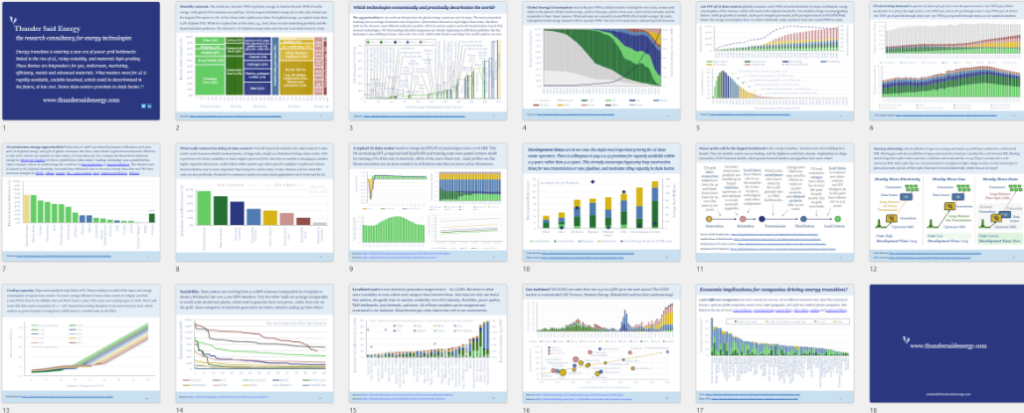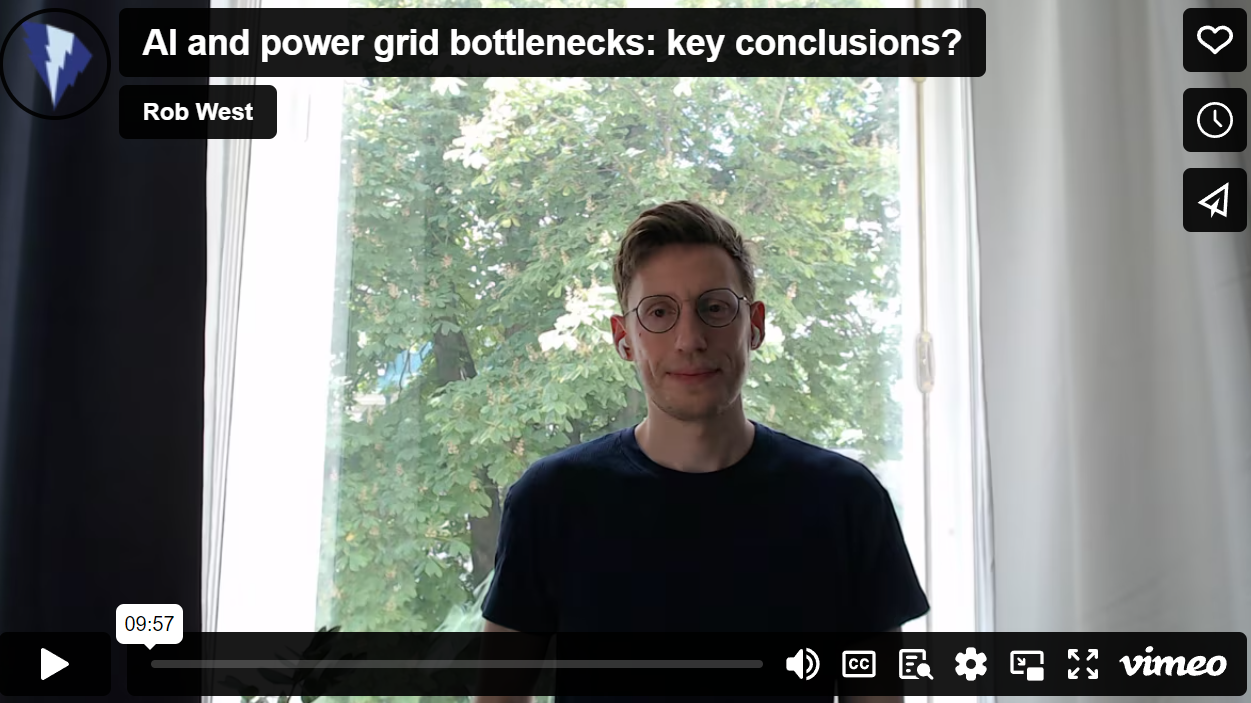The number one topic in energy this year has been the rise of AI. Which might not seem like an energy topic. Yet it is inextricably linked with power grid bottlenecks, the single biggest issue for energy markets in the mid-late 2020s. The goal of today’s video is to recap our key conclusions. There is an accompanying presentation for TSE clients.
AI and power grid bottlenecks are becoming inextricably interlinked. The reasons and implications are explored in this video. The button above is for a 17-page presentation, in case you would like to follow along with the video, with underlying charts and data, and is available to TSE clients.

The energy consumption of AI is discussed in the first portion of the video, estimated at 150GW globally in 2030, adding 1,000 TWH of new electricity demand. Together with other electrification initiatives, US electricity demand growth quintuples?
The justification for AI is that it will unlock fascinating efficiency gains and game-changing technologies. We explore this idea in the second section of the video. Areas that stand out to us include next-generation DAC, materials, autonomous vehicles, thermoelectric semiconductors and superconductors.
The more immediate bottlenecks for AI are bottlenecks in powering new AI data-centers, amidst deepening power grid bottlenecks. Data-centers want cheap, reliable, low-carbon power, available ASAP, from the power grid, at a location of their choosing near their end customers. Unfortunately, this is a unicorn. It does not exist. The third portion of the video assesses which variables are ‘must haves’ and can’t be compromised.
The conclusion from AI and power grid bottlenecks leads us to shale basins? When we assess all of the lower-carbon options, their levelized costs and other dimensions that AI will end up prioritizing, then we find it will be best to circumvent long-standing bottlenecks in the power and gas grids, by situating AI data-centers near fast-to-market energy sources, then move the data via fiber-optics.
We look forward to discussing actionable implications of this research with TSE clients. Please email us if we can help you, or if you would like to explore a discussion. In the meantime, our best ideas for further reading are summarized on page 17 of the presentation below.
